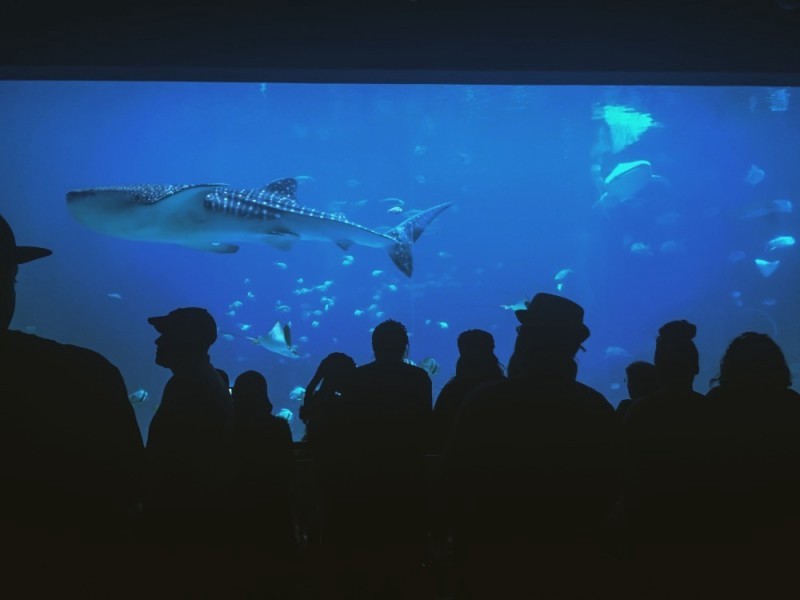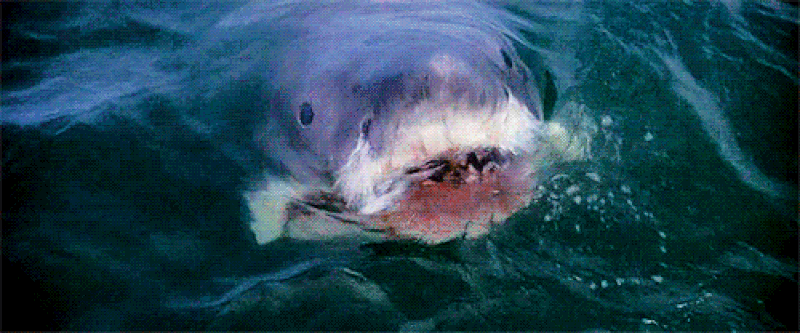Ever Wonder Why There Are No Great Whites In Aquariums?
It’s not just because of their predator status.
I’ve always had a fascination with marine biology. I’m talking such a big fascination, I got my SCUBA certification at the tender age of 10 so I could see some of my favorite creatures, including the great white shark. My dreams shattered as I jumped in the water with my scuba gear and realized that there was a possibility that I would actually meet a shark face-to-face. My imagination ran away from me in less than two seconds and I immediately jumped back onto the boat, pretty much wasting my scuba instructor’s time.
Recently, I took a trip to Atlanta and had the pleasure of going to the Georgia Aquarium. I wanted to face my fear by looking a great white shark in the eyes to let em’ know that I’m not the same scaredy-cat I was many years ago. As I walked around oooh-ing and ahhh-ing at the different creatures, I realized I never encountered a great white shark. There were massive manta rays and even bigger whale sharks, but the largest predator fish in the ocean was missing from each of the fascinating exhibits. Then I thought about it: I’ve never seen a great white shark in any aquarium I’ve been to.

When I started digging around on the internet, headlines popped up everywhere explaining that great whites have never been in captivity for long periods of time. According to Vox, SeaWorld held the record for the longest time a great white survived in captivity. After just 16 days in the SeaWorld facility, the shark passed away. The shark, like many other great whites that were held shortly in captivity, refused to eat and would constantly run into the glass enclosure, hurting itself. In order to survive, great whites need a lot of space to freely move around (since they can grow to about 15 feet) and to have water continuously flowing through their gills in order to breathe.
During the 70s, 80s and 90s, it was believed by some experts that the captivity wasn’t killing the sharks, but the sharks were just in the process of dying before their capture. Alas, that idea proved to be false after Monterey Bay Aquarium in California found a way to capture a great white and care for it for a total of six months.
In order to achieve the highest possible rate of survival, the aquarium captured a baby shark since it would be easier to carry. They built a specialized transportation container for the shark and pumped IV fluids to the fish in order for it to stay alive during its journey from Southern California to the aquarium in Northern California.
Once at the aquarium, the four feet, four inches long shark had a diet of small fish — typical to what it would have had in the wild. After about six months of growing in captivity, the shark began to eat other sharks in the exhibit, forcing the aquarium staff to move the shark back into the wild.

In the case of the great white shark, it’s best to just leave these animals alone and check up on them whenever Shark Week comes back on the Discovery Channel. Great whites, like all fish, belong in their natural habitat. Sure, it’s cool to be able to see these creatures up close, but at whose expense? Plenty of these creatures have been hunted and killed in aquariums’ attempts to have a novelty attraction, but none of these sharks seemed to have actually needed to be captured.
As my pal, Sigourney Weaver said in “Finding Dory,” the best thing we can do for any marine animal is to rescue, rehabilitate and release into their natural environment. So if you end up coming face to face with a great white, appreciate its beauty and complex survival mechanism, then swim like hell.
